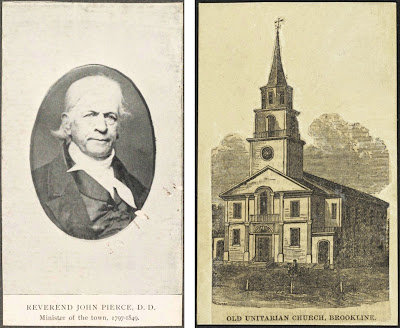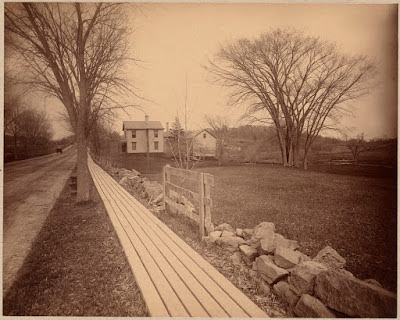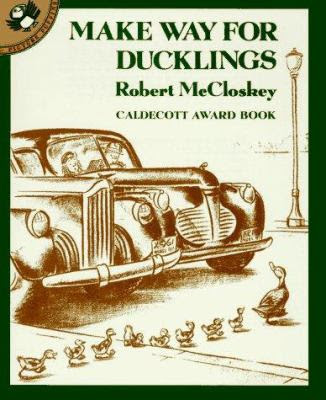| August 31, 1889 |
August 30, 1632 - First colonial mention of Muddy River
August 31, 1889 - First ad for Beaconsfield Terraces
August 29, 1910 - Opening of new library
August 31, 1954 - Hurricane Carol
August 30, 1632
First colonial mention of Muddy River
John Winthrop, governor of the Massachusetts Bay Colony, noted in his journal that a group of indigenous people had been reported at "Muddy River."
"Notice being given of ten sagamores and many Indians assembled at Muddy River, the governor sent Capt. Underhill, with twenty musketeers, to discover, etc.; but at Roxbury they heard that they were broken up."
In November 1634, there was a note in the records of the Town of Boston about making "a rate for the young cattle and cows keeper at Muddy River." One year later, five men were allotted land in Muddy River, which remained a part of Boston until becoming the independent town of Brookline in 1705.
 |
| Muddy River (shown as Muday R.) is indicated west of Boston and Roxbury in this portion of a 1634 map of "The south part of New England" by William Wood |
There were, of course, Native Americans in the area long before the arrival of Europeans. An 1897 history of the town noted that "an Indian fort stood on what is now the eastern corner of Beacon and Powell streets; it covered one-eighth of an acre, was surrounded by a ditch about three feet deep and by a parapet nearly three feet high."
August 31, 1889
First ad for Beaconsfield Terraces
The first three units of Eugene Knapp's Beaconsfield Terraces complex were advertised for sale in the Boston Transcript. The units were most likely in Richter Terrace at the corner of Beacon Street and Dean Road, the first building completed in the seven-building, 49-unit development .
The complex included a central heating plant, a stable, a shared six-acre park, and a clubhouse, known as the Casino. An 1890 view of the Casino, with three of the Terraces buildings behind it, is at the top of this post.
Opening of new library
"Since the new building would be erected in the same spot where the library now stood, the old building would have to be moved to accommodate the new structure. $244,000 was appropriated for this purpose. The old building was cut from its foundation and raised on jacks. It was shifted westward 144 feet, 8 inches and then southward 88 feet, 8 inches to the spot where the Civil War Monument now stands. It took two months to complete the move. During this time library service was never interrupted – not even for a single hour! "
 |
| These images from the 2007 history of the library show the 1869 library building raised on railroad ties and ready to be moved. (Click image for larger view) |
It took two weeks, after the new building was completed, to move all of the books from the old building to the new. That was followed by the opening of the new library. (It has since been expanded and renovated several times.)
August 31, 1954
Hurricane Carol
Hurricane Carol, carrying winds blowing at 100 miles per hour, toppled trees, blew out windows, and knocked down power lines, leaving about 75 percent of the town without electricity before it could be restored.
 |
| Police car under a felled tree on Washington Street (Brookline Chronicle) |
There were only minor injuries in town, but a Brookline woman, Golda Walters, was killed on Cape Cod along with her sister and her sister's three children when the Falmouth home they were staying in was swept into the sea. Walters, a lawyer, had been the youngest woman judge in Massachusetts when she had been appointed, at age 30, to serve on the Ayer district court in 1938.
Brookline was hit, though less severely, by a second hurricane, Hurricane Edna, two weeks later.














